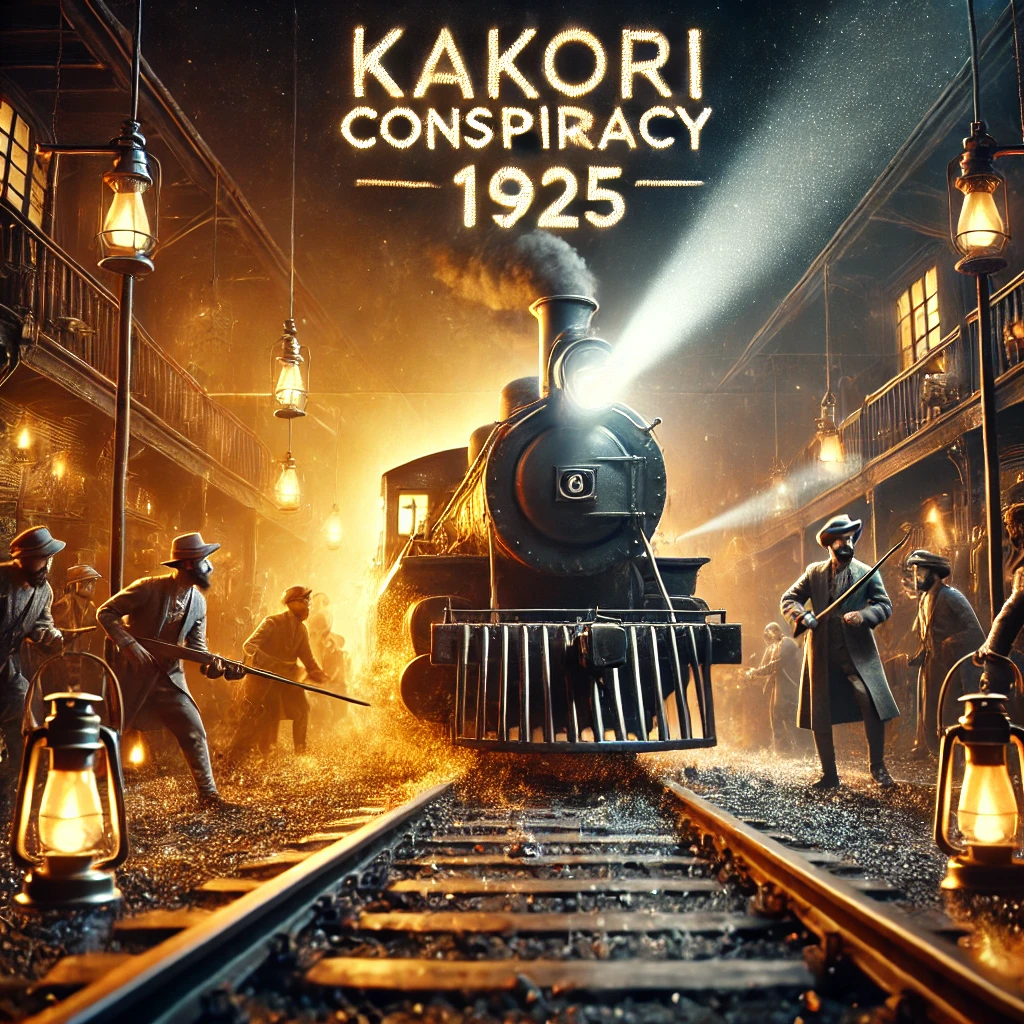The struggle for India’s independence was marked by both non-violent movements and armed resistance against British rule. One of the most daring revolutionary activities of the early 20th century was the Kakori Conspiracy Case of 1925. This event was orchestrated by the Hindustan Republican Association (HRA), a revolutionary organization committed to overthrowing British rule through armed revolution. The incident was not just a train robbery; it was a bold statement against colonial oppression and a demonstration of the indomitable spirit of India’s young revolutionaries.
Hindustan Republican Association (HRA): The Revolutionary Force
The Hindustan Republican Association (HRA) was a radical revolutionary organization founded in 1924 by Ram Prasad Bismil, Sachindra Nath Sanyal, and Jogesh Chandra Chatterjee. The primary objective of the HRA was to wage an armed struggle against British imperialism and establish an independent, socialist republic in India.
The organization was deeply inspired by the Irish struggle for independence, the Russian Revolution (1917), and the ideals of Anarchism and Marxism. Unlike the Indian National Congress, which followed a non-violent approach, HRA believed in direct action and armed revolution to overthrow British rule.
Objectives of HRA
- Overthrow British rule through armed revolution.
- Establish a federal republic of India.
- Mobilize youth and workers for revolutionary activities.
- Challenge British economic exploitation and social injustices.
- Attack symbols of British authority to inspire mass rebellion.
The HRA actively recruited young revolutionaries from different parts of India, particularly students and intellectuals who were disillusioned with the passive approach of mainstream political organizations.
The Kakori Conspiracy: A Bold Revolutionary Act
The Kakori Conspiracy Case was an act of planned rebellion carried out by HRA revolutionaries on August 9, 1925. The primary objective was to loot government funds to finance the freedom struggle and make a strong political statement against British rule.
Why Was the Train Targeted?
The revolutionaries carefully selected the Saharanpur-Lucknow Passenger Train near Kakori (a town in present-day Uttar Pradesh) because:
- It carried government treasury funds collected from tax revenues.
- The train was less guarded, making it an easy target.
- The looted money could be used to fund further revolutionary activities.
Key Revolutionaries Involved
Several members of the HRA played a crucial role in planning and executing the train robbery:
- Ram Prasad Bismil – Mastermind of the operation.
- Ashfaqulla Khan – Key strategist and planner.
- Rajendra Lahiri – Helped in organizing logistics.
- Chandrashekhar Azad – Provided armed support and cover.
- Sachindra Nath Bakshi – Played a crucial role in execution.
- Manmath Nath Gupta – Helped in coordination.
Execution of the Train Robbery
- The revolutionaries halted the train near Kakori by pulling the emergency chain.
- They attacked the guard’s compartment, overpowering British officers.
- The group looted government funds and managed to escape.
- No civilians were harmed, as their aim was only to seize British treasury funds.
The robbery shook the British administration and was seen as an unprecedented act of defiance against colonial rule.
The Aftermath: British Crackdown and Arrests
The Kakori train robbery infuriated the British government, leading to a massive crackdown on revolutionaries. The CID (Criminal Investigation Department) launched extensive investigations, arresting many HRA members.
Sentences and Executions
After a prolonged trial, several revolutionaries were sentenced to death, life imprisonment, or rigorous punishment:
- Ram Prasad Bismil, Ashfaqulla Khan, Rajendra Lahiri, and Thakur Roshan Singh were sentenced to death and hanged in 1927.
- Manmath Nath Gupta and several others were given life imprisonment.
- Chandrashekhar Azad evaded arrest but later died in a gunfight with British police in 1931.
The execution of these brave revolutionaries left a deep impact on Indian youth, inspiring future movements such as Bhagat Singh’s Hindustan Socialist Republican Association (HSRA).
Legacy of the Kakori Conspiracy and HRA
The Kakori Conspiracy had a profound impact on India’s freedom movement:
- It inspired future revolutionaries, including Bhagat Singh, Sukhdev, and Rajguru.
- It exposed British brutality, as the harsh punishments meted out to the revolutionaries angered the Indian public.
- The HRA later evolved into the HSRA (Hindustan Socialist Republican Association), under the leadership of Bhagat Singh and Chandrashekhar Azad.
The courage and sacrifices of the HRA revolutionaries made them immortal in India’s struggle for independence. The Kakori train robbery is still remembered as a bold act of defiance, symbolizing the undying spirit of resistance against British colonialism.
Conclusion
The Hindustan Republican Association (HRA) was the driving force behind the Kakori Conspiracy of 1925. The organization, founded by revolutionaries like Ram Prasad Bismil and Ashfaqulla Khan, aimed to achieve independence through armed resistance. The train robbery at Kakori was not just about money; it was an attempt to ignite a nationalistic spirit and show the British that Indians were ready to fight for their freedom.
Though the revolutionaries faced execution and imprisonment, their sacrifice inspired a new generation of freedom fighters, ultimately leading to India’s independence in 1947. Today, the Kakori Conspiracy remains a symbol of bravery, patriotism, and the revolutionary zeal that helped shape the course of Indian history.




